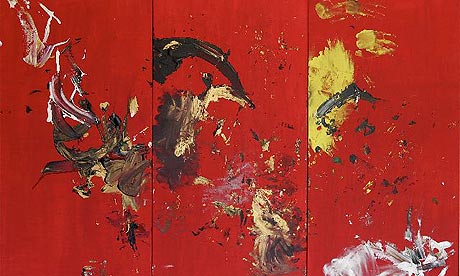There's Fido, in Snow Crash. It plays a fairly pivotal part in the plot, but on the whole appears for only a handful of pages.
There's the giant bird in "I Have No Mouth, But I Must Scream," created by AM, but it's just an incidental obstacle, one of many horrors the last humans encounter.
I can't think of a single animal in any William Gibson novel.
Nor any animals in The Matrix.
This isn't to say that there are none, but what I'm trying to get at here is that animals seem to play such an incidental role in these narratives that they're barely memorable at best. When they do appear, they are incidental and simple in their natures. Fido, for example, is more an archetypal idea of loyal dogness than an animal in his own right (although, in fairness, ALL the characters in Snow Crash are fairly archetypal--the book consciously plays with that fact. See: "Hiro Protagonist." I just can't get over that name).
The introduction of animals as another intelligent force worthy of political consideration in cyberfeminist theory caught me off guard for this reason, I think. The basic idea of looking at animals hasn't been completely off my radar, of course, but I've always previously, in discussions with other transhumanists, discussed animals in terms of which ones were closest to us in human intelligence, and which would be the next to join us as fully evolved species.
Christ, even typing this I feel like going back in time and smacking myself.
I can't totally blame myself, though--with an absence of different models for human-animal interactions to work from, and a society built upon a clear hierarchical understanding of human-animal power dynamics, it's not surprising that I'd end up formulating a way of talking about these relationships that places me at the top of a paternalistic pyramid of education and elevation directed towards my inferiors.
It's also, I think, not surprising that even forward-thinking scholarship sometimes struggles to break from these structures as well. I think particularly of Beatriz DaCosta's pigeon project, which involved the application of sensor devices to pigeons to measure urban air quality. She refers repeatedly to the pigeons as "collaborators," but it's never quite clear to me what role as collaborators the pigeons were able to have. How much control, for example, did they have over their flight routes? How much understanding of what their purpose was?
There's material here, I think, that we could engage with more deeply, but I'm not quite sure where to start. I'm reminded, too, of discussions of animal painters. I think it's in Dutton's The Art Instinct (a book with some serious problems but that does offer some interesting potential insights) that I read recently about the way chimpanzee painters depend, for their art practice, upon a handler taking their canvas from them at a certain point. Without this removal, they will continue splattering paint long after the canvas becomes a muddy wreck. Is this collaboration? I'm not sure. I look at it askance the same way I look at three year old "prodigy" abstract painters askance--there's clearly a facilitation of one sort or another going on here, a curation of images. I worry that in performance art, more so even than in painting, it's easy to disguise the use of living beings as "randomly programmed automatic paintbrush[es]" as the Guardian described Aelita Andre.

I think Donna Haraway does a somewhat better job in this talk on DaCosta's work of delving into some of these problems. You can jump to about the 15:45 minute mark to go straight to her part of the talk.
Feminism, Technology, and Transformation from FemTechNet on Vimeo.
The interesting thing about Haraway's conceptualization of DaCosta's relationship with the Lucinha, Bringer of Light is that for Haraway (as with just about everything else, which is part of why I love her) the relationship is not an innocent one. It's a complex relationship where the animal's existence is shaped by and contingent on human need. It's a genetically designed entity created, effectively, to fulfill a human need. Haraway doesn't shy away from how much the dog is a function of human agency.
But she also flips that around and discusses the way in which DaCosta's life, already shaped by cancer, is shaped further by the bringing of this Bringer of Light into her life. And that has me wondering: how much agency does DaCosta ultimately have in Lucinha's creation and entrance into her life and her world? DaCosta is not responsible for Lucinha's breeding, her genetic structure, her temperament (Haraway contrasts Lucinha with her sibling, notably), and does seem, in Haraway's reading, to participate as a collaborator in Lucinha's training, in that Lucinha makes it necessary to go to a training camp, to work with her constantly, and so on.
Haraway is therefore making clear the animal agency, even if that agency isn't necessarily a result of multi-stage planning like we'd expect from humans. But neither is DaCosta's agency fully a product of that kind of prior planning or obvious, closed-ended collaborative goals.
I'm not sure how to untangle all of this, honestly. I'm a novice here, and it's hard to write a conclusion when I'm not sure what conclusions I can draw from this continuously problematized set of relationships.
I think it's time for me to seek out some science fiction where animals play more than a bit part, though.
Cyborg Maria will never be good to you, bad to you.
No comments:
Post a Comment